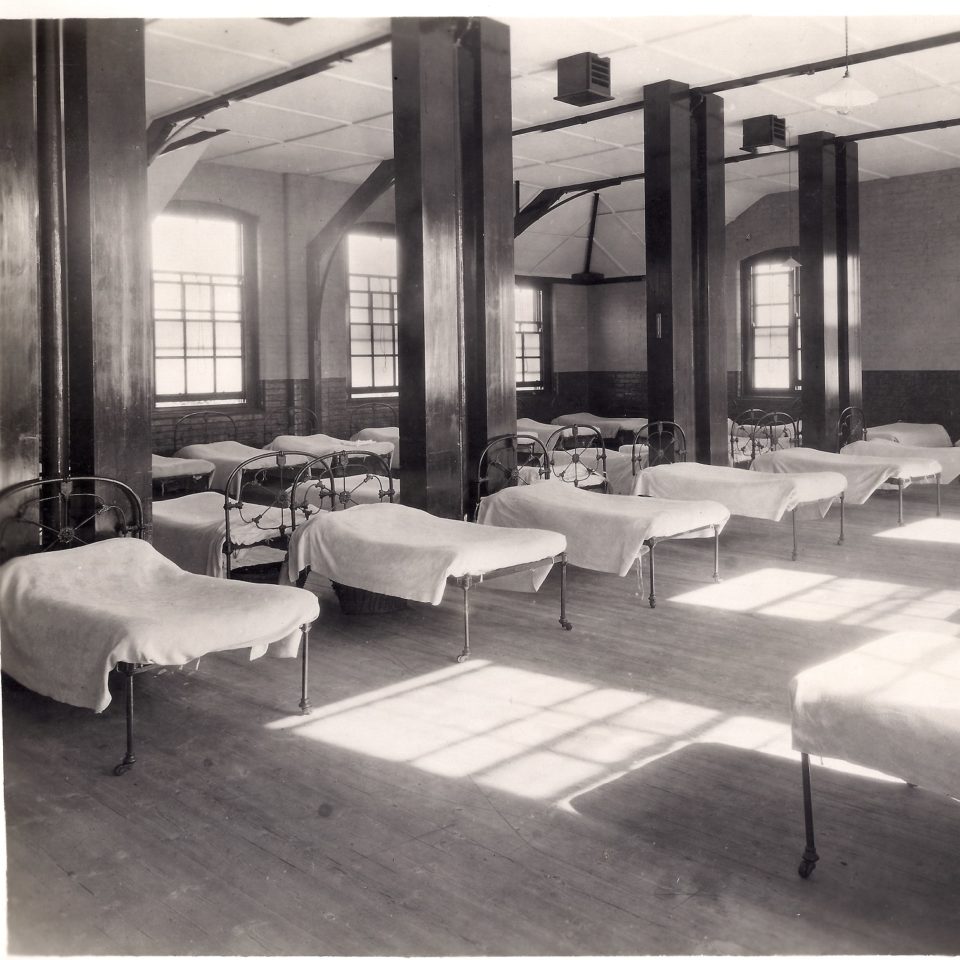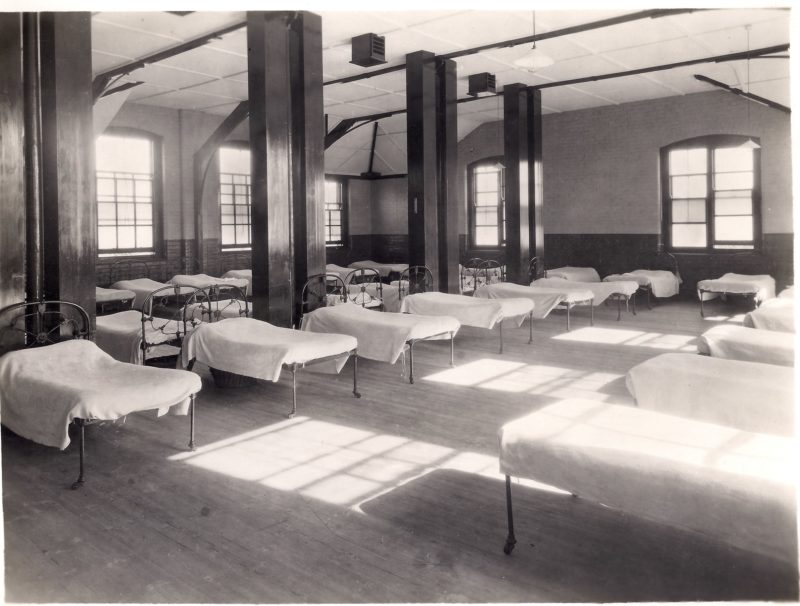About the object
This bed came from the Berkhamsted site, although it may have belonged to the Hospital from before then. Its length and height appear to have been reduced at some point in the twentieth century. The photograph behind it shows rows of identical beds in a dormitory at the Foundling Hospital in Redhill, Surrey. It was temporarily based in a school there between leaving the London building in 1926, and moving to the new Hospital site at Berkhamsted in 1935.
It is possible that the earliest beds at the Foundling Hospital were made of wood, if so they were later replaced by iron bedsteads. Iron beds would have been easier to clean and keep free of bugs. The dormitories in the Foundling Hospital were usually called wards, and the staff who looked after the children were called nurses. In the eighteenth century, two children slept in each bed but later on each had their own.
Room inventories, room by room lists of furniture and equipment at the Hospital were made at various times, although most are undated. One, which is dated 1779, states that each bed had a mattress, bolster (pillow), three blankets, a coverlet or quilt and a counterpane (bedspread). Four boys’ wards and four girls’ wards are recorded, with approximately 20 to 25 beds per ward. With two children per bed that would mean 40 to 50 children per ward, with around 400 children living in the Hospital altogether. Children who were unwell would sleep in the Hospital’s separate infirmary building.
For most of the lifetime of the Foundling Hospital as a place of residential care, it seems that children were not allowed toys in their beds, probably as a precaution against lice, although they may have had access to toys for outdoor play such as hoops. In the very final years, many aspects of the Hospital’s care and education were modernised, and this rule seems to have been slightly relaxed.

